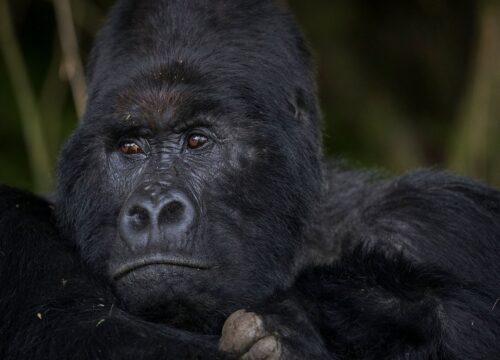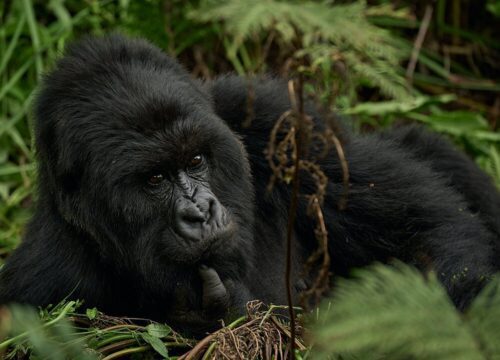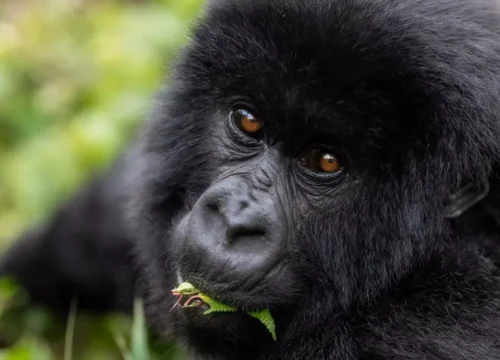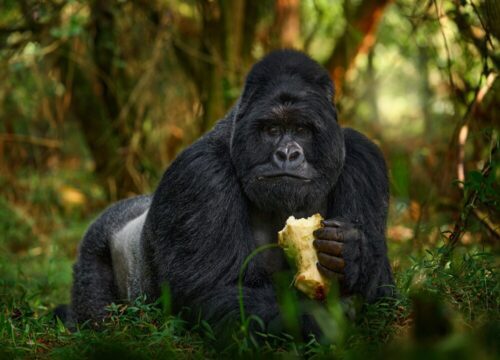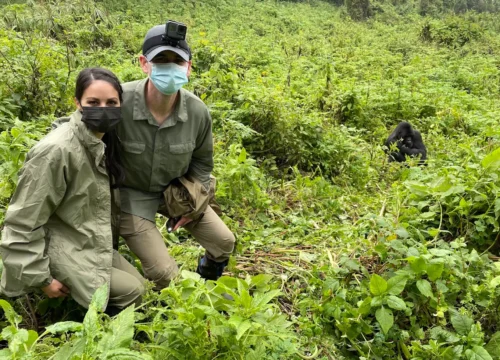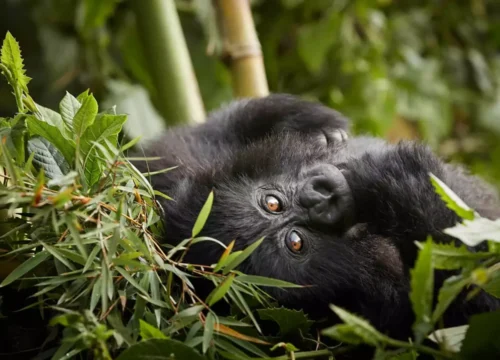The Great Wildebeest Migration Safari
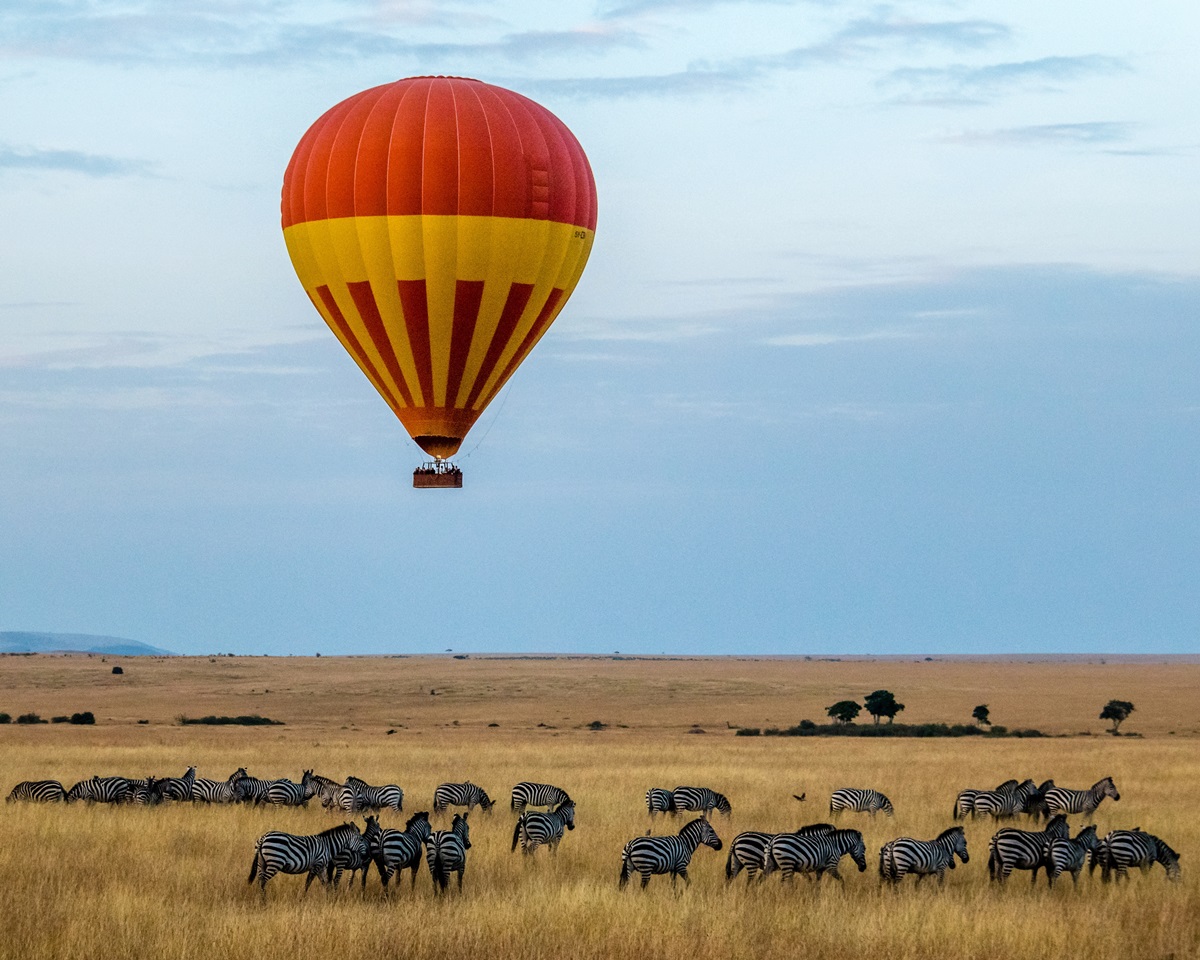
The Great Wildebeest Migration—also known as the Gnu Migration, Serengeti Migration, or Masai Mara Migration—is one of the last great mass movements of land animals on Earth. This breathtaking event draws thousands of travelers to Kenya and Tanzania, especially between July and October, to witness nature’s most dramatic survival story unfold.
A Wildlife Phenomenon Like No Other

The Migration is an extraordinary paradox: while it follows a general pattern, the exact timing remains unpredictable. We know that over 1.5 million wildebeest, along with zebra and antelope, will brave the treacherous Mara River crossings, but no one can pinpoint the exact moment. Similarly, the seasonal rains dictate the herds’ movement toward fresh grazing lands, yet their arrival is never precise.
Planning the Perfect Migration Safari
With decades of experience crafting Wildebeest Migration safaris, we know how to get travelers to the right place at the right time—ensuring an unforgettable experience. Whether you want to witness the calving season in the Southern Serengeti (January–March) or the thrilling river crossings (July–October), expert planning makes all the difference.
How Does the Great Wildebeest Migration Work?
The Great Migration is one of nature’s most awe-inspiring events, with over two million wildebeest, zebra, and antelope moving through the Serengeti-Mara ecosystem in a continuous cycle. This year-round journey is dictated by rainfall, fresh grazing, and instinctive survival—resulting in dramatic river crossings, predator encounters, and breathtaking wildlife spectacles.
Can the Migration River Crossings Be Predicted?
No, not even the wildebeest know exactly when they’ll cross! Some herds reach the river and plunge in immediately, while others hesitate for days or even turn back. River crossings are completely unpredictable, making patience essential. The best way to increase your chances of witnessing this heart-pounding moment is to spend as much time on safari as possible in key areas like the Mara River (Kenya) or Grumeti River (Tanzania) during peak months (July–October).
When Do Wildebeest Migrate?

Contrary to popular belief, the Great Migration is a year-round event, not just from July to October when the famous river crossings take place. Wildebeest follow a continuous, circular path, driven by rainfall and fresh grazing:
✅ January–March: Calving season in the Southern Serengeti & Ndutu Plains—predators lurk as thousands of wildebeest calves are born.
✅ April–May: The herds move northwest as the long rains begin, gathering in the Western Corridor & Grumeti Reserve.
✅ June–October: The thrilling river crossings at the Grumeti & Mara Rivers—one of nature’s deadliest obstacles.
✅ November–December: The herds start their journey back south to the Serengeti & Ngorongoro region, completing the cycle.
Where Does the Great Migration Start?
There’s no fixed start or end point—it’s a continuous loop across Tanzania’s Serengeti and Kenya’s Masai Mara. The movement is triggered by seasonal rainfall and grazing conditions, guiding the wildebeest through their ancient route:
🔹 South Serengeti & Ngorongoro (Jan–March) → 🔹 Western Corridor & Grumeti (April–June) → 🔹 Northern Serengeti & Masai Mara (July–October) → 🔹 Back South (Nov–Dec).
This epic journey spans nearly 3,000 kilometers, creating one of the most extraordinary wildlife events on Earth.
Why Do Wildebeest Migrate?

The Great Migration is driven by the wildebeest’s need for food and survival. These animals instinctively follow the rains, moving toward fresh, nutrient-rich grasslands. Some experts suggest they may even sense distant thunderstorms and lightning, though this remains unproven.
Regardless of the reason, the Great Migration is a must-see for any safari enthusiast—a spectacle of endurance, instinct, and the raw power of nature.
When to Visit the Great Wildebeest Migration
With climate change affecting rainfall patterns in Tanzania and Kenya, the Great Migration has become less predictable than it once was. The long and short rainy seasons may arrive early or late, throwing the entire migration cycle off schedule.
That’s why it’s crucial to allow ample time on safari if you want to witness a river crossing or major migration event—nature doesn’t work on a set timetable.
January
📍 Location: Southern Serengeti & Ndutu Plains, Tanzania
🚼 Highlights: Wildebeest moving south, scattered mega-herds
In January, the herds are concentrated in the Southern Serengeti, near Lake Ndutu. Since the Serengeti ecosystem is unfenced, the animals move freely in search of grazing. They split into smaller mega-herds of thousands or even hundreds of individuals, covering vast stretches of land.
February – March
📍 Location: Ndutu & Southern Serengeti, Tanzania
🐾 Highlights: 8,000+ wildebeest calves born daily, intense predator activity
These months mark the peak of calving season, with thousands of newborn wildebeest taking their first steps. But survival is brutal—lions, cheetahs, hyenas, jackals, and wild dogs are on the hunt. This is one of the best times for dramatic predator-prey interactions in the Serengeti.
If the short rains (Nov–Dec) produced good grazing, the herds remain in the southern plains before gradually shifting west in March.
April
📍 Location: Western Serengeti, Tanzania
🔥 Highlights: Start of rutting (breeding) season, fierce male battles
April signals the long rainy season (April–May) and the beginning of the herds’ northwestern journey toward the Moru and Simba Kopjes. The rutting season is in full swing, with testosterone-fueled clashes as dominant males fight for the right to mate.
May
📍 Location: Central Serengeti, Tanzania
🚶♂️ Highlights: 40 km (25-mile) long columns of wildebeest on the move
By May, the herds accelerate their journey north, forming massive columns stretching up to 40 km (25 miles) long. The young calves, now stronger, can keep up with the relentless movement.
June
📍 Location: Western Serengeti & Grumeti River, Tanzania
🌊 Highlights: Some herds cross the Grumeti River
As the wildebeest reach the Grumeti River, the migration splinters—some herds hesitate while others begin their first treacherous river crossings. Here, they face giant Nile crocodiles, making for heart-pounding safari action.
🔹 Tip: Booking early (up to a year in advance) ensures you secure a prime lodge or mobile safari camp near the river.
July
📍 Location: Northern Serengeti & Mara River, Tanzania/Kenya
🐊 Highlights: The most dangerous and spectacular river crossings
By July, the herds arrive at the Mara River, hesitating at its banks before taking the plunge. The crossings are chaotic, unpredictable, and deadly—thousands of wildebeest are swept away by strong currents or fall prey to waiting crocodiles.
🔹 Tip: There’s no way to predict crossings—spending more days near the river increases your chances of witnessing the spectacle.
August
📍 Location: Masai Mara, Kenya & Northern Serengeti, Tanzania
📷 Highlights: One of the best months to see river crossings
August is the prime time to witness dramatic crossings. The wildebeest that survive the Mara River make their way into Kenya’s Masai Mara, while some herds remain in Northern Serengeti.
🔹 Tip: The Masai Mara National Reserve can be crowded—consider staying in a private conservancy for a more exclusive safari experience.
September
📍 Location: Masai Mara, Kenya & Northern Serengeti, Tanzania
🌿 Highlights: Smaller herds scattered between Kenya & Tanzania
Not all wildebeest migrate into Kenya—many remain in Northern Serengeti. However, the Masai Mara remains the best place to see the largest concentration of wildebeest during September.
October
📍 Location: Masai Mara, Kenya
🚶 Highlights: Wildebeest still moving through the reserve
By October, the herds begin to thin out, but the Masai Mara remains a top wildlife destination. Private conservancies bordering the reserve offer off-road game drives, night safaris, and guided walks, which aren’t allowed in the national park.
November
📍 Location: Northern & Eastern Serengeti, Tanzania
☔ Highlights: Short rains trigger the migration’s southward journey
As November’s short rains rejuvenate the Serengeti, the wildebeest start moving south. The timing of this return is unpredictable, but wildebeest can be seen in the northeastern Serengeti as they prepare for the next calving season.
🔹 Tip: Early mornings and late afternoons can be chilly—pack warm clothing for game drives.
December
📍 Location: Eastern & Southern Serengeti, Tanzania
🔄 Highlights: Fresh grazing attracts the herds southward
By December, the wildebeest are back in the southern Serengeti, feeding on lush new grass and preparing for yet another death-defying 3,000-km (1,900-mi) journey.
Top Tips for Planning Your Wildebeest Migration Safari
A Great Migration safari is one of Africa’s most thrilling wildlife spectacles. Whether you want to witness thousands of wildebeest crossing the Mara River, experience the calving season, or avoid the crowds, planning ahead is key. Here are the top expert tips to ensure your migration safari is seamless and unforgettable.
- Book Early – At Least a Year in Advance
🏕️ Why? Safari lodges and mobile camps fill up quickly, especially between June and October when the river crossings take place. If you want a prime location near the action, secure your spot at least 12 months in advance.
- Choose the Right Timing for Your Safari Goals
📅 The Migration is unpredictable, but knowing where to go and when helps you maximize your experience:
• 🦓 December – May → Calving season in Southern Serengeti & Ndutu Plains
• 🐊 June – October → River crossings at the Grumeti & Mara Rivers
• 🌍 October – November → Wildebeest moving back to Tanzania’s Northern Serengeti & Lobo Area
- Avoid the Crowds for a More Exclusive Safari
🚙 Peak season (June–October) attracts large crowds, especially in the Masai Mara and Serengeti. For a more private experience, consider:
✅ Staying in private conservancies adjacent to the Masai Mara for luxurious lodges, fewer vehicles, and exclusive activities like night drives & bush walks.
✅ Choosing Serengeti camps slightly away from migration hotspots—you can still access the action but retreat to tranquility afterward.
- Diversify Your Game Viewing Experience
🐘 A Wildebeest Migration safari is spectacular but can be chaotic, dusty, and noisy. To balance your adventure:
➡ Spend time in non-migration areas to enjoy a classic Big 5 safari (lion, leopard, elephant, rhino, buffalo).
➡ Stay at lodges away from the herds for a more relaxed safari experience.
- Enhance Your Migration Safari with Other Destinations
🌍 The Serengeti and Masai Mara can be easily combined with other incredible African destinations. Consider adding:
• 🦍 Gorilla trekking in Uganda, Rwanda, or Congo.
• 🏝️ Beach relaxation in Zanzibar, Seychelles, or Mauritius.
• 🍷 Cape Town for world-class wine, culture, and adventure.
• 🌊 Victoria Falls for Devil’s Pool, white-water rafting, and scenic flights.
Recent Posts
Last Minute Deals
Quick booking process
+49 1575 4711313





